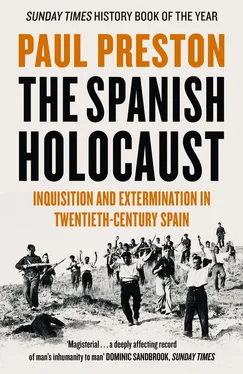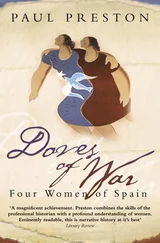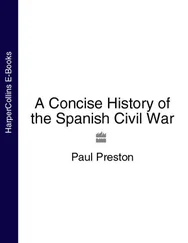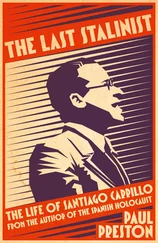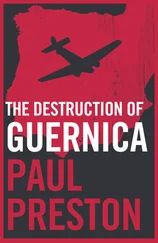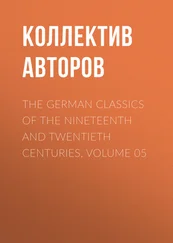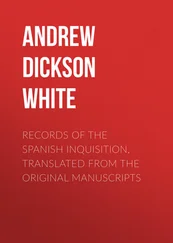At Calvo Sotelo’s burial, Antonio Goicoechea swore to ‘imitate your example, avenge your death and save Spain’. Even more bellicose was the speech made to the standing committee of the Cortes on 15 July by the Conde de Vallellano, on behalf of the Carlists and Renovación Española. Vallellano, referring rather inaccurately to ‘this unprecedented crime in our political history’, claimed that Calvo Sotelo had opposed all violence. Accusing the Popular Front deputies collectively of responsibility, he announced the monarchist abandonment of parliament. In what was to be his last parliamentary intervention, Gil Robles expressed his agreement with Vallellano and blamed both the violence of recent months and the assassination on the government. Knowing full well the objectives of the imminent military uprising, he declared that the parties of the Popular Front would be the first victims of the coming backlash. 130
PART TWO

Queipo’s Terror: The Purging of the South
The assassination of Calvo Sotelo seemed to confirm the direst predictions of the right-wing press, and the military conspirators pressed ahead. Yet only six weeks earlier, Mola, at his headquarters in Pamplona, had been so depressed by fear that the coup might fail and be followed by the revenge of the left-wing masses that he contemplated resigning his command and retiring to Cuba. He was assailed by doubts about the crucial participation of Spain’s Moroccan forces – the locally recruited mercenaries of the Native Regulars (Regulares Indígenas) and the two sections into which the Spanish Foreign Legion (Tercio de Extranjeros) was organized. Mola’s alarm had been triggered on 2 June 1936 when the Prime Minister and Minister of War, Santiago Casares Quiroga, removed a key conspirator, Lieutenant Colonel Heli Rolando de Tella, from command of the First Legion based in Melilla on the Mediterranean coast of Spanish Morocco. Even more worrying was the fact that, the next day, Casares Quiroga sent for Lieutenant Colonel Juan Yagüe, who had been placed in overall charge of the uprising in the colony. 1
While waiting to hear Yagüe’s fate, Mola enjoyed a major stroke of luck on 3 June. The Director General of Security, José Alonso Mallol, swooped on Pamplona with a dozen police-filled trucks to search for arms. However, the plotters, warned in advance by Mola’s collaborator, the police superintendent Santiago Martín Báguenas, ensured that no evidence was found. 2They were even more fortunate two weeks later when Yagüe was left in post. Having practised extraordinary brutality during the repression in Asturias in October 1934, Yagüe was bitterly hated on the left. He in turn had ample reason to resent the Republic, having been demoted in 1932 from lieutenant colonel to major by Azaña’s military reforms, which had reversed many of the rapid promotions enjoyed by the Africanistas. Humiliated by losing eighty-two places in the seniority list, he had had to wait a year before being restored to the rank of lieutenant colonel. 3Yagüe commanded the Second Legion in Ceuta on the southern side of the Straits of Gibraltar. Loudly indiscreet in his hostility to the government, he enjoyed the unquestioning loyalty of the tattooed mercenaries under his command.
Leading Socialists had repeatedly warned Casares Quiroga that it was dangerous to leave Yagüe in post. Yet, when he arrived on 12 June, he was offered a transfer either to a desirable post on the Spanish mainland or to a plum position as a military attaché in Rome. Yagüe replied curtly that he would burn his uniform rather than leave the Legion. To Mola’s relief, Casares weakly acquiesced and let him return to Morocco. After their meeting, Casares said to his adjutant, Ignacio Hidalgo de Cisneros, ‘Yagüe is a gentleman, a perfect officer, and I am sure that he would never betray the Republic. He has given me his word of honour and his promise as an officer that he will always loyally serve the Republic. And men like Yagüe keep their word.’ It was a major political error. 4
In the event, Mola was persuaded by senior Carlists to stay aboard and, regaining his resolve, began to make every effort to ensure the rising’s success. Nevertheless, in the second week of July, during the fiesta of San Fermín, Mola was again plunged into despair by news brought to Pamplona by his younger brother Ramón. The thirty-nine-year-old Ramón, an infantry captain in Barcelona, was Emilio’s liaison with the plotters there. The Generalitat’s security services had uncovered the plans for the rising in Catalonia and a deeply pessimistic Ramón begged his brother to desist. Emilio replied that it was too late and ordered Ramón to return to Barcelona. It was a virtual death sentence. When the coup failed, as Ramón had predicted, he shot himself. This contributed to the further brutalization of Mola. In contrast, he would be unmoved by the fact that the President of the Generalitat, Lluís Companys, saved the life of his father, the eighty-three-year-old retired General of the Civil Guard Emilio Mola López. 5
The first of Mola’s secret instructions, issued in April, echoed the practice of the Africanistas against the Rif tribesmen, calling for extreme violence to shock the left into paralysis. Throughout the army as a whole, commitment to the conspiracy was far from unanimous. If it had been, it is unlikely that there would have been a civil war. Thus, Mola’s third secret instruction ordered the immediate execution of officers who opposed, or refused to join, the coup. The fifth instruction, of 20 June, had declared that ‘the timid and the hesitant should be warned that he who is not with us is against us and will be treated as an enemy’. 6Thus the first victims executed by the military rebels would be fellow army officers.
On 24 June, Mola sent specific instructions to Yagüe. He urged three main principles: extreme violence, tempo and high mobility: ‘Vacillations lead only to failure.’ 7Six days later, Yagüe received a more detailed set of twenty-five instructions about the organization of the repression. They included the following: use Moorish forces; delegate control of public order and security in the cities to the Falange; arrest all suspect authorities; eliminate all leftist elements (Communists, anarchists, trade unionists, Masons and so on); shut down all public meeting places; prohibit all demonstrations, strikes and public and private meetings. 8These instructions were the blueprint for the repression unleashed on Spain’s Moroccan territories on the night of 17 July. By sheer force of personality, Yagüe entirely dominated the overall commander of forces in Morocco, General Agustín Gómez Morato. Between 5 and 12 July, in the Llano Amarillo in the Ketama Valley, manoeuvres involving 20,000 troops from the Legion and the Regulares saw Yagüe’s tent become the epicentre of the African end of the conspiracy as he briefed the principal rebel officers. The manoeuvres concluded with Falangist chants. 9
On 17 July, at Melilla, headquarters of the Second Legion, the general in command, Manuel Romerales Quintero, having refused to join the plotters, was arrested and shot for his ‘extremist ideas’. The rebels, headed by Colonel Luis Solans-Labedán, very soon had nearly one thousand prisoners in a concentration camp. When the overall commander General Gómez Morato flew to Melilla, he was immediately arrested. In Tetuán, in the western half of the Protectorate, Colonel Eduardo Sáenz de Buruaga and Lieutenant Colonel Carlos Asensio Cabanillas detained the acting High Commissioner, Arturo Álvarez Buylla, who was shot some time later. On the night of 17–18 July, the rebels shot 225 soldiers and civilians in Morocco. 10
Читать дальше
